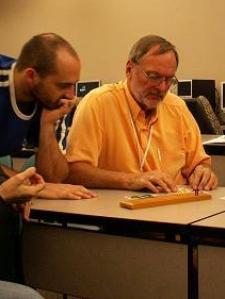
Kenneth S. answered • 05/05/16
Tutor
4.8
(62)
Expert Help in Algebra/Trig/(Pre)calculus to Guarantee Success in 2018
The number N that is not a perfect square lies between two perfect squares K2 and (K+1)2 so choose Z = K + ½ as the estimate.
Square it. If it's less than N, select a slightly larger Z as the estimate and repeat this step. If it's more than N, choose a slightly smaller Z as the estimate and repeat this step. Quit when you're satisfied that Z is approximately the square root of N.
Example: Square root of 11...lies between 9 & 16 so K2 = 9, K = 3, Z = 3.5
Z squared is 12.5 so Z was too big... choose Z = 3.3
Z squared is 10.89 which is smaller than N = 11 so now adjust Z upward from 3.3 to 3.4.
Z squared is 3.42 = 11.56, too big, adjust Z downward to 3.35
3.352 = 11.2225, too big, adjust downward to 3.32; this squared is 11.0224; adjust downward again to 3.315;
Z2 = 10.989225 and this is a pretty good estimate for √11.
Kind of makes you appreciate the calculator, doesn't it!






Mark M.
05/05/16